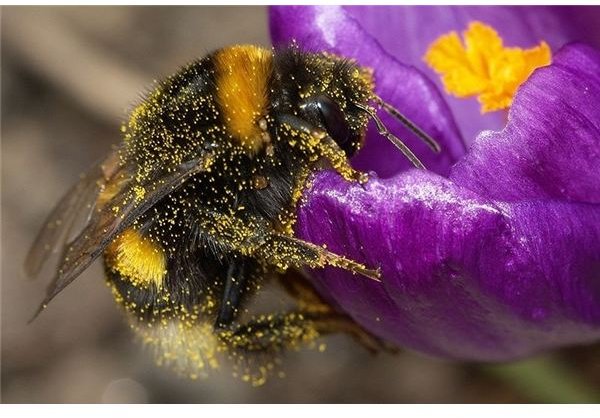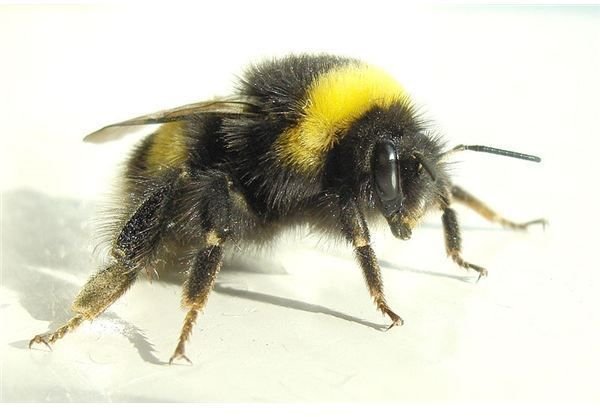Bumblebee Facts: Habitat, Behavior, Diet & More
The Bumblebee
Without flowers, the bumblebee would die and without bumblebees, many wildflowers would not reproduce. These amazing creatures are social insects that play an important role in pollinating crops. They are natives of North America, and 49 known species exist in the United States. These bees can flap their wings at a rate of 130 to 240 times a second and can fly up to almost 11 mph. Below are more interesting and fun bumblebee facts.
Description
Bumblebees are large bees, about 3/4 inch long. They have stocky black and yellow bodies and are covered with hairs which pollen sticks to. The 49 species are divided into three types depending on the size of their tongue (proboscis) length: long, medium, and short. The different lengths allow the bees to visit all sizes and shapes of flowers.
Behavior
Bumblebees live in colonies and are active during the day. The queen bee is responsible for reproducing. The male drones are needed to fertilize the queen, and the worker bees (females) maintain the hive. Bumblebees are normally non-aggressive, unless they are around their nesting site. The queen and worker bees can sting, and the males cannot. However, unlike the honeybee, which can only sting once (and dies), the bumblebee can sting more than once. This is because their stinger is smooth and not barbed like those of the honeybees.
Habitat
Most nests can be found underground in abandoned rodent burrows or mouse nests. The nest has several entrances, and the size can be up to 12 inches in diameter. Unlike honeybees, bumblebees do not store large amounts of honey.
Diet

Bumblebees feed on nectar, a source of carbohydrates, and pollen, a source of protein. Worker bees collect the nectar and pollen and bring it to the hive to feed the colony. The bee will mark a flower with a scent telling other bees the nectar is gone.
Reproduction
Pollen stimulates the ovaries of the queen bee to produce eggs. She will lay the eggs in the colony, in batches of 4 to 16 eggs on a ball of pollen. Fertilized eggs produce females (queens and workers), and unfertilized eggs produce male drones. After the eggs hatch, the larvae go through several stages of development. It can take up to five weeks for the bee to become an adult. The queen produces a few generations of bees during the summer. In the late fall, all bees except the fertilized queens die. Queen bees survive the winter and begin nesting in the springtime.
More Information
The following are more interesting bumblebee facts:
• If the wing muscles of the bee falls below 86° F, it cannot fly.
• Some flowers depend on the buzzing of bumblebees to pollinate.
• Bumblebees do not have ears, and they do not have arteries and veins to carry blood (the blood just sloshes around the muscles and organs).
• Some short-tongued bees can collect nectar from long-tube flowers without pollinating them. This is known as “nectar robbing”.
• Worker bees live an average of four weeks. Some die in as little as five days. Queen bees can live up to a year, and males die soon after mating.
References
https://depts.washington.edu/natmap/facts/bumblebee.html
https://insects.tamu.edu/fieldguide/cimg340.html
https://www.eoearth.org/article/Bumblebee
Photo Credit
https://commons.wikimedia.org/wiki/File:Bumblebee_2007-04-19.jpg
https://en.wikipedia.org/wiki/File:Bumblebee-2009-04-19-01.jpg
